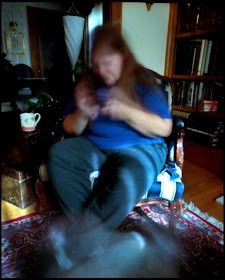My student period from earlier this year made me a little curious again, and I decided that the Oshkosh Populist with it's panoramic format would be a good tool to use this film with.
I'm used to guessing exposures with ISO 200 film in an f160 camera (The Populist) so I thought f144 at ISO 400 wouldn't be too different. Turns out you can't get away with overexposure with silver the way you can with color dyes, and I ended up with a lot of blocked up highlights, and even a few shadows that were a little hard to push some light through.
But, lets see if we can get anything out of these negatives. I only got three I liked.
As the name implies, the Oshkosh Populist is all about working with the level topography of Oshkosh.
The Buckstaff Plant on South Main St. has been an eyesore and fire hazard since it closed in 2011. A good bit of the rest of this area can best be described as blighted, although a few somewhat industrial businesses still operate. This year, the Milwaukee Bucks decided to locate a minor league team in Oshkosh - the Wisconsin Herd (of deer, get it?). The Buckstaff plant was finally torn down, and the new arena is under construction, and hopes are high that it will bring a major renewal to the area (a micro-brewery is already starting across the street).
Just across the railroad tracks on Lake Winnebago, on a island all it's own is the Pioneer Inn. It used to be one of the hot spots for business and vacation travel in Oshkosh. It closed in 2005 when the owners got into a dispute with the Department of Natural Resources over a reconstruction project of the hotel, and it's been vacant ever since. I wonder if the new arena will be sufficient impetus to get it going again?
On the north side, hemmed in against Highway 41 and suburban housing developments is the Oshkosh Correctional Center, a 300 prisoner medium security prison for men. Except for the entrance, it's surrounded by a giant berm and all you can see are the lights and guard towers. I couldn't tell if there was anyone looking down at me while I was taking this picture.
I'm going to continue to see what I can do with the Oshkosh Populist with this stash of sort of out-dated Tri-X. I replaced the .27mm pinhole with the .2mm I measured with the Teslong USB microscope, which gets me about a stop slower. It's theoretically too small for the 35mm distance to the film, but I've had success with smaller than ideal pinholes in other cameras, and I think diffraction is more likely to lower contrast a bit than sharpness, which I could kind of use with these negatives. I've also learned my lesson and am stopping to actually measure the exposure, and I've been practicing trying to make one second exposures.



















